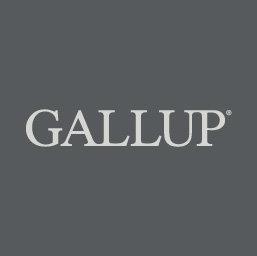
Majority Still Says Religion Can Answer Today's Problems
Increasing numbers of Americans say religion is out of date
PRINCETON, NJ -- Fifty-seven percent of Americans say that religion can answer all or most of today's problems, while 30% say that religion is largely old fashioned and out of date. Americans have in recent decades become gradually less likely to say that religion can answer today's problems and more likely to believe religion is out of date.

The latest update on this long-term Gallup trend comes from Gallup's May 8-11 Values and Beliefs survey. Gallup asked this question once in the 1950s, once in the 1970s, and multiple times in the 1980s and each subsequent decade.
The 82% choosing the "can answer today's problems" options in 1957 is in line with a number of other measures from that decade showing a high level of religiosity, including religious service attendance, importance of religion, and the percentage of Americans with a formal religious identity.
But Americans' belief that religion can answer most problems dropped -- to 62% -- when Gallup next asked the question in the 1970s, and it remained at about this level in the 1980s and 1990s. Americans' belief that religion offers answers fell to 60% in the 2000s, while those stating the secular belief rose to 25%.
So far this decade, an average of 57% of Americans have held this view, representing a small but notable decline.

Americans also appear to have a somewhat higher degree of certainty about their views on religion now than in the past, with the percentage not choosing "can answer today's problems" or "old fashioned" dropping in recent years compared with previous decades. Additionally, because the 2014 data match the overall average for the current decade, it is possible that the trend toward the belief that religion is out of date may be abating.
Highly Religious Groups Most Likely to Say Religion Relevant to Today's Problems
Americans' views on the overall relevance of religion in terms of answering today's problems are naturally related to their own personal religiosity, including measures of religious service attendance, self-reported importance of religion, and having a formal religious identity.

The relationships between views on the relevance of religion and other demographic groupings of the population largely reflect how the underlying religiosity of each of those categories. Older Americans, women, those living in the South, and political conservatives are among the most religious groups in the U.S. based on measures of church attendance and importance of religion. These groups, in turn, are also the most likely to say that religion can answer most or all of today's problems. Still, across almost all of the demographic and political categories in the table below, the percentage saying that religion can answer most or all of today's problems is higher than the percentage saying that it is out of date. The exception is liberals, comprising about 25% of this sample, who are more likely to say religion is out of date than to say it can answer today's problems.

Implications
Over the past 40 years, there has been a gradual shift in Americans' views of the relevance of religion in answering today's problems, with an increasing, but still minority, segment saying that religion is old fashioned and out of date.
The question itself is a broad take on Americans' views of the relevance of religion in today's society, and clearly, the 30% who say it is not relevant today differs markedly from the 7% who felt that way in 1957 or the 15% who felt that way in 1981. Still, the majority of Americans continue to believe that religion can answer today's problems, another indicator that the nation, by far, remains a religious country. And, with the trend leveling off in recent years, it appears this aspect of the secularization of U.S. society may have slowed, if not halted, for the foreseeable future.
Survey Methods
Results for this Gallup poll are based on telephone interviews conducted May 8-11, 2014, on the Gallup Daily tracking survey, with a random sample of 1,028 adults, aged 18 and older, living in all 50 U.S. states and the District of Columbia.
For results based on the total sample of national adults, the margin of sampling error is ±4 percentage points at the 95% confidence level.
Interviews are conducted with respondents on landline telephones and cellular phones, with interviews conducted in Spanish for respondents who are primarily Spanish-speaking. Each sample of national adults includes a minimum quota of 50% cellphone respondents and 50% landline respondents, with additional minimum quotas by time zone within region. Landline and cellular telephone numbers are selected using random-digit-dial methods. Landline respondents are chosen at random within each household on the basis of which member had the most recent birthday.
Samples are weighted to correct for unequal selection probability, nonresponse, and double coverage of landline and cell users in the two sampling frames. They are also weighted to match the national demographics of gender, age, race, Hispanic ethnicity, education, region, population density, and phone status (cellphone only/landline only/both, and cellphone mostly). Demographic weighting targets are based on the most recent Current Population Survey figures for the aged 18 and older U.S. population. Phone status targets are based on the most recent National Health Interview Survey. Population density targets are based on the most recent U.S. census. All reported margins of sampling error include the computed design effects for weighting.
In addition to sampling error, question wording and practical difficulties in conducting surveys can introduce error or bias into the findings of public opinion polls.
For more details on Gallup's polling methodology, visit www.gallup.com.
